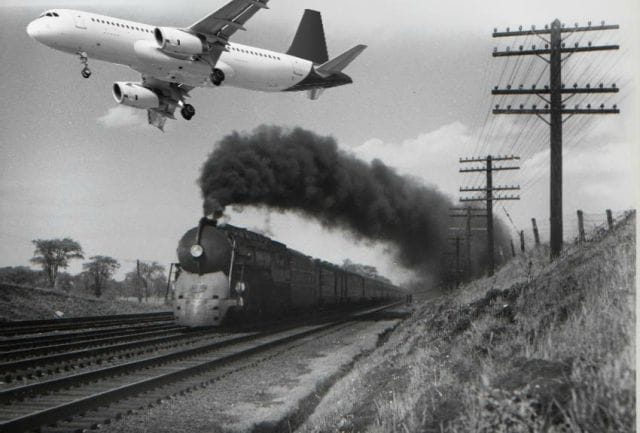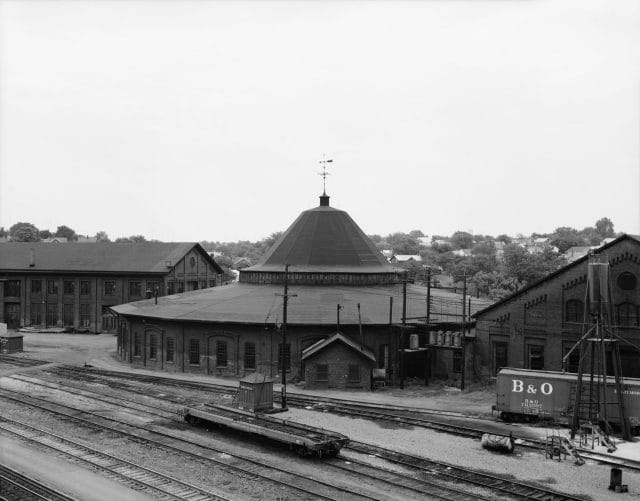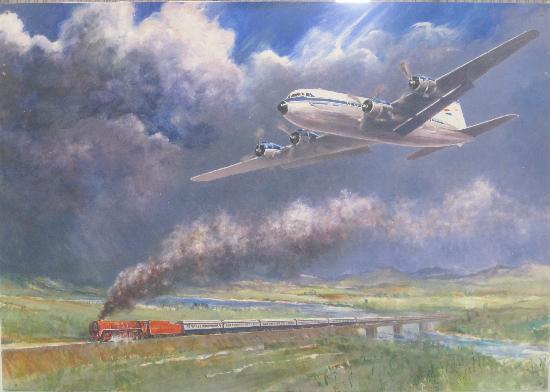
Editor’s note: This story was written by Kevin Murnane through the Priceonomics Freelance Writing Program
![]()
As evidenced in recent quotes from the worlds of politics, sports, and journalism, the word “wheelhouse” has become an increasingly prevalent metaphor for a person’s comfort zone or area of expertise:
“This is my wheelhouse. That’s what I do well. The economy is what I do well.”
~ Presidential candidate Donald Trump, on his economic program (9/28/15)“He put it right in my wheelhouse. I just had to shoot.”
~ Hockey player Nikita Kucherov, on his game-winning goal (5/02/2015)“…His values are very much in my wheelhouse.”
~ Broadcaster Tom Brokaw, on Lester Holt becoming an NBC anchor (6/22/2015)
Yet despite its increased usage, this metaphor is not well understood. Tracing its origins yields a story rooted in a technology-driven revolution that took place within the nation’s transportation infrastructure.

San Francisco Giants outfielder Orlando Cepeda (right), with manager Bill Rigney, who was the first person to use “wheelhouse” as a metaphor; via Mears Auctions
The first recorded use of “wheelhouse” in a metaphorical sense can be traced back more than 50 years.
In the spring of 1959, the San Francisco Giants’ Hall of Fame outfielder Orlando Cepeda was mired in a hitting slump. When a reporter for The San Francisco Chronicle asked the team’s manager, Bill Rigney, what was wrong with his player, Rigney’s response forever changed the way baseball broadcasters talk about the game:
“It just seems he’s not seeing ‘em the way he used to…He’s had a couple that came right into the wheelhouse — the kind he used to knock out of sight — and he fouled ‘em off.”
Rigney’s use of “wheelhouse” introduced the metaphor into the media and it appears to be the root from which the modern wheelhouse metaphor grew.
Today, The Dickson Baseball Dictionary defines “wheelhouse” as “That part of the strike zone in which the batter swings with the most power or strength,” or, “the path of the batter’s best swing.” While this is a nice, clear explanation of Rigney’s lingo, it raises several follow-up questions:
What, literally, is a wheelhouse? And how did this term catch on and become a mainstay in everyday jargon?
***
A wheelhouse, also known as a “pilot house,” is an enclosed structure on the bridge of a ship, where you can find everything needed to control and navigate the vessel — including the wheel.
With a little imagination, the term seems to be applicable enough to baseball. After all, a batter is in complete control of pitches that land in his “power zone” (the area of the strike zone where the batter’s natural swing brings the bat into contact with the ball); it is not much of a stretch to compare this level of control to what a ship’s captain might have in a wheelhouse.
In a sense, the metaphor works, but something still doesn’t seem quite right. Why would a nautical term catch on and become a part of baseball jargon?

The wheelhouse of a ship; via Charter World
The term “wheelhouse” was also used in the rail yard. When a train came to the end of the line, it had to turn around to go back the way it came; this was usually accomplished by using an enormous circular turntable that rotated the train. These turntables were often covered, or partially covered, with a building so that maintenance work on the locomotive could be carried out indoors between runs. The buildings were commonly called roundhouses but were also known as wheelhouses.
It can be argued that the railroad wheelhouse is a better metaphor for the batter’s power zone than the nautical wheelhouse. Picture an immense locomotive sitting on the turntable. When the turntable spins, the locomotive (the bat) swings in a powerful arc (the batter’s swing) from one side of the wheelhouse to the other (the strike zone).
Contextually, it also makes more sense that “wheelhouse,” as a baseball term, would find its roots in the rail yard rather than the shipyard.

A wheelhouse in a rail yard; via Wikipedia
When The San Francisco Chronicle quoted the Giants’ manager, both professional sports and intercity travel were significantly different than they had been just five years earlier. In 1954, Major League Baseball was solely an East Coast and Midwestern sport: the westernmost team was in St. Louis and the southernmost team was in the District of Columbia. This wasn’t because people elsewhere in the States weren’t interested in baseball, but rather because expansion was constrained by the time it took teams to travel between cities by train.
For most of the 1950s, trains were the only feasible way to travel long distances between cities. Traveling by train from New York to Chicago, for instance, was a 16-hour journey in the mid-1950s — long, but still manageable enough for a team to make the trip on an off-day between series. Traveling to the West Coast to play baseball was out of the question: by train, it took about 58 hours to go from New York to San Francisco. In 1954, the American Association of Railroads claimed that 90 percent of Major League Baseball travel was by railway.
It’s impossible to say for certain whether Bill Rigney pulled the word from nautical or railroad slang when he appropriated it for baseball in his 1959 interview, though it seems far more feasible that it was the latter. The players, managers, and reporters who covered baseball did not come into regular contact with boats as part of their professional lives; trains were an everyday part of the job. It is likely that nearly everyone who lived the day-to-day life of professional baseball in the 1950s had a wealth of experience with railroads, and was familiar with at least a little industry jargon.

A Brooklyn Dodgers opening day promo from 1946; via Baseball Hall
Considering the rail yard as the source for Rigney’s metaphor provides a possible insight into why so many people do not know what a wheelhouse is today. The American transportation industry was in the midst of a massive transformation when Rigney was quoted. This revolution goes a long way toward explaining why people lost sight of the connection between wheelhouses and railroads.
Commercial airline technology advanced considerably throughout the 1950s; before the end of the decade, the number of passengers traveling by plane had surpassed the number traveling by train. In 1959, the same year Rigney’s metaphor appeared in the San Francisco Chronicle, a slew of airline companies — National Airlines, American Airlines, Delta, United, and Continental — began offering jet service between most major U.S. cities. Just three years earlier, it had taken 58 hours to travel from New York to San Francisco by train; now, the same trip took about 7 hours by jet. Major League Baseball quickly took advantage of these faster travel times. In an effort to capitalize on the new markets that would open up the following year, the New York Giants and the Brooklyn Dodgers abandoned their home cities and moved to California in 1958.
Rigney answered the reporter’s question at precisely the moment in time when technological change sundered the relationship between his metaphorical use of “wheelhouse” and the wheelhouses that gave meaning to the metaphor. Before the metaphor appeared in print, its meaning would have been easily understood because many people traveled by train; after it appeared, its meaning became increasingly opaque.

As planes overtook trains as a more popular method of transportation, the metaphorical origins of “wheelhouse” were obscured; via TripAdvisor
The “wheelhouse” case is a good example of how a term can lose its original meaning as an unexpected consequence of technological changes.
Perhaps the best modern example of the same phenomenon is the metaphorical use of “bugs” to refer to coding errors in computer programs. As early as 1843, engineers referred to setbacks as “bugs” — but it wasn’t until a moth was discovered trapped in an early computer in 1945 that the term was “cemented in the programmer’s daily lexicon.” With the inventions of the transistor and the integrated circuit in the 1950s, the connection between relays and computers was lost. Today, “bug” is used more commonly used to describe glitches in software, rather than hardware.
Technological change demands words for things that are new to the world and it is not uncommon for these words to shift in meaning. If the technology changes quickly enough, a word’s connection to its original meaning can be lost. Might people who are born this year, or next, be surprised 30 years from now to learn that “text” was once a noun that referred to words printed on paper?
Language lives, words are fluid, and meaning is malleable. Understanding how the life of the past informs the language of the present can be a source of endless fascination.
![]()
This post was written by Kevin Murnane for the Priceonomics Freelance Writing Program. You can check out more of his writing here.



